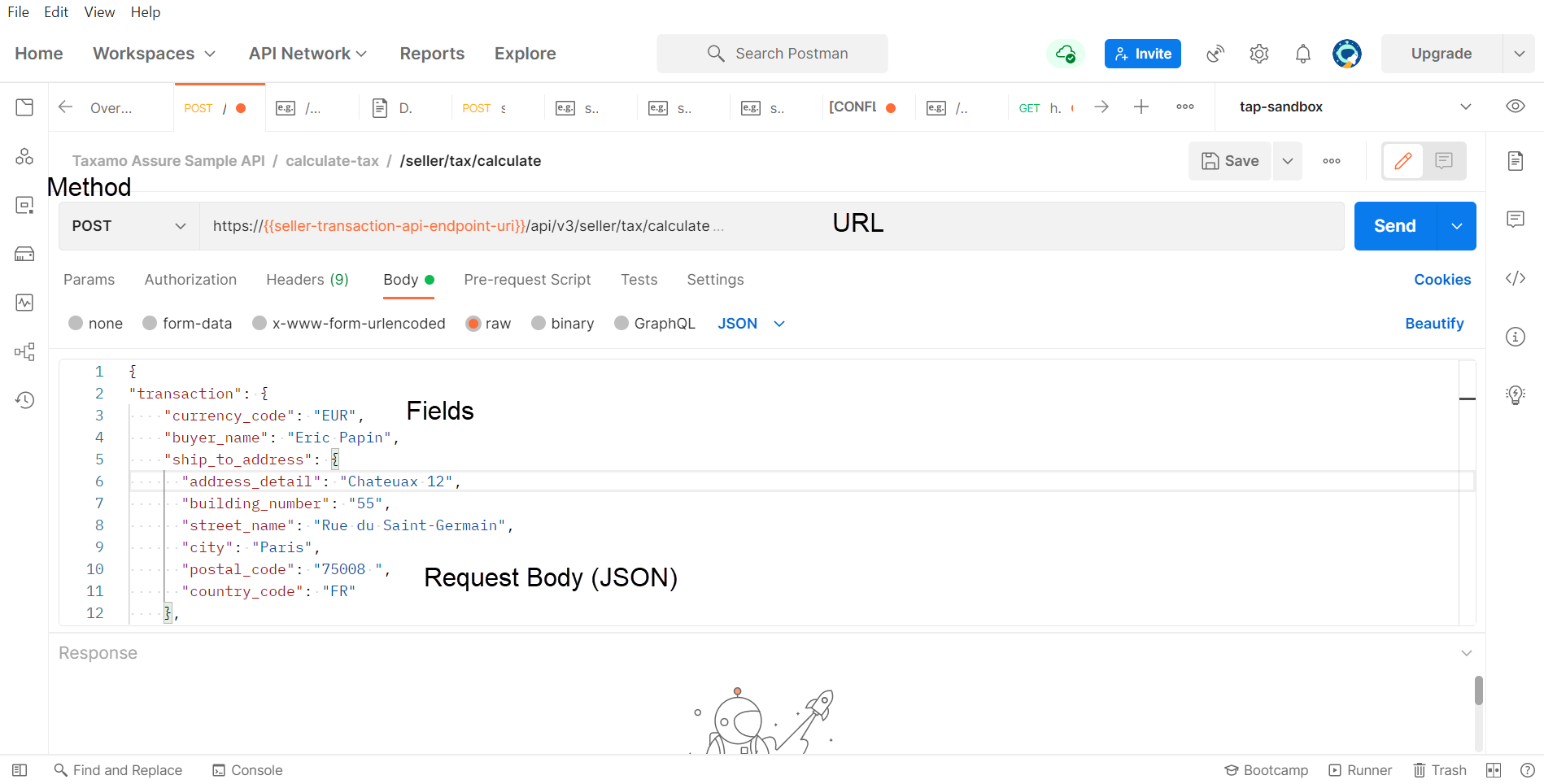Requests Overview
Read a basic overview of what a request is and how you use it to integrate with the service.
You can use the requests listed here to integrate the service's functions with your checkout processes.
You use a combination of an endpoint in the API and a method to model the functions that you use to integrate the service and your checkout process. For example, you might use the Confirm Transactions (POST +/seller/transactions/key/confirm) request to confirm a transaction in your basket after payment is confirmed.
Request Components
The following screenshot shows an example of a request in Postman:

Request Overview
It is made up of a method and a URL, These call an endpoint in the API. The information that is sent is contained in the fields in the request's body. This is in the JSON format.
For more information about how information is structured in the attached JSON, see JSON Objects Overview.
Request Body (JSON Objects)
Specific information is sent to the API and returned by the API as values for fields. These fields are grouped together in JSON objects that are attached to the requests and responses. For more information, see Fields Reference Overview.
In general, but not always, the responses returned match the fields sent in the associated request. In some cases, you may also find that a response contains more or fewer fields than those specified in the body of the request. For more information, see Response-Only and Inactive Fields.
Transaction Key Values
The Transaction Key value represents the specific transaction that you want to perform the request on. For more information, see Using Transaction Key Values.
Updated almost 2 years ago
